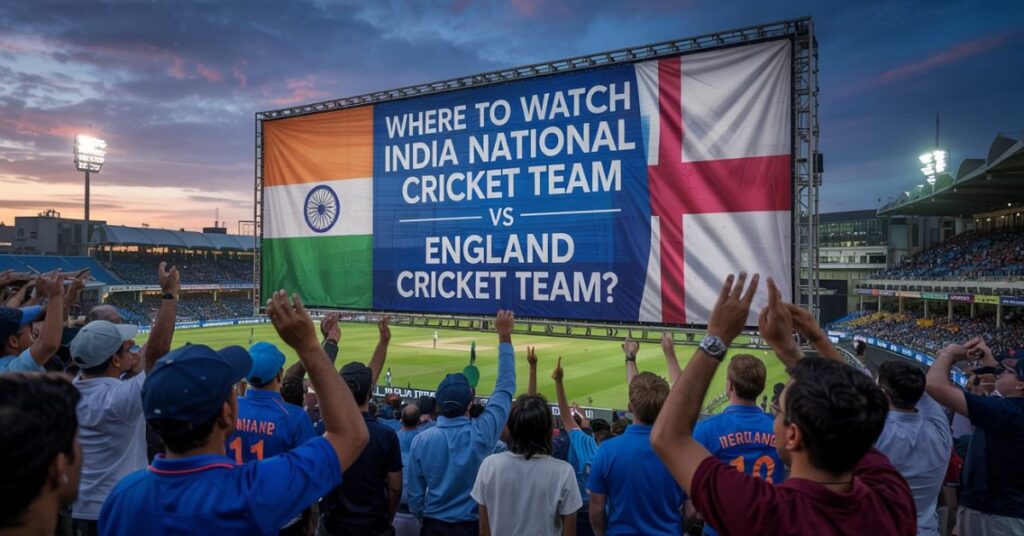Cricket is measured by numbers as much as by performances on the field. Every ball, run, or wicket tells a story, and strike rate has become one of the most important metrics in modern cricket. It reflects the pace at which a batsman scores or a bowler strikes and directly influences results, especially in shorter formats. In Test cricket, it may not always decide the outcome, but in ODIs and T20s, it often separates match-winners from average contributors. Strike rate has become a decisive factor in team strategy.
What is the Strike Rate in Cricket?
Strike rate measures efficiency. For batsmen, it reflects scoring speed, while for bowlers, it reveals wicket-taking frequency.
- Batting Strike Rate: Runs scored per 100 balls faced.
- Bowling Strike Rate: Balls bowled per wicket taken.
These measures show how aggressively a batsman plays or how often a bowler takes wickets.
How is the strike rate calculated?
How is Batting Strike Rate Calculated?
The formula is simple:
(Runs Scored ÷ Balls Faced) × 100
Example: A batsman who scores 60 runs from 30 balls has a strike rate of 200.
High batting strike rates are vital in T20s and ODIs, where quick scoring decides matches. A strike rate above 150 in T20s can shift momentum instantly, while even in ODIs, finishing an innings with a 120 strike rate often decides totals.
How is Bowling Strike Rate Calculated?
For bowlers, the formula is:
(Balls Bowled ÷ Wickets Taken)
Example: A bowler delivers 300 balls and picks 15 wickets. The bowler strikes once every 20 balls.
This means the bowler takes a wicket every 20 balls. In Tests, bowlers with low strike rates are highly valued because breakthroughs are needed to win matches. In T20s, it shows the ability to stop partnerships quickly.
Strike Rate vs Batting Average
Strike rate and batting average highlight different qualities.
- Average: Consistency and ability to score big.
- Strike Rate: Speed of scoring.
Virat Kohli is admired for his high average, showing reliability across formats. Andre Russell is feared for his high strike rate, showing match-turning impact in fewer balls. Both are valuable, but in different contexts.
Why is Strike Rate Important in Modern Cricket?
The rise of T20s has transformed cricket. High strike rates define power-hitters who can change a game in minutes. For bowlers, lower strike rates highlight wicket-taking ability and aggression. Leagues like the IPL use strike rate as a key measure for selection and contracts. Teams now focus on impact per ball rather than just cumulative runs or wickets.
Best Strike Rates in Cricket History
- Batting: AB de Villiers, Glenn Maxwell, Andre Russell.
- Bowling: Dale Steyn, Jasprit Bumrah, Rashid Khan.
These records cover Tests, ODIs, and T20s, but these players consistently rank among the best.
Factors Affecting Strike Rate
- Batting: Pitch quality, batting position, opposition attack.
- Bowling: Pitch type, format, role as spinner or pacer.
- Format: Test cricket rewards patience, T20 cricket rewards aggression.
How do Players Improve Their Strike Rate?
Batsmen improve by refining shot selection, rotating strike, and practising power-hitting. Bowlers improve by adding variations, hitting attacking lengths, and building pressure through dot balls. Training and analysis help batsmen and bowlers adapt to match conditions.
Limitations of Strike Rate
Strike rate alone cannot define a player. Anchors like Kane Williamson may score slowly but provide stability. Similarly, a bowler may take wickets quickly but concede too many runs. Balance with the average and the economy rate always matters.
Strike Rate in Different Formats
- Test Cricket: Strike rate takes a back seat, survival matters more.
- ODI Cricket: Both average and strike rate need to be balanced.
- T20 Cricket: Strike rate becomes the most decisive factor.
Strike Rate in Women’s Cricket
The growth of women’s cricket has placed new emphasis on strike rate. Players like Harmanpreet Kaur and Alyssa Healy have shown how high strike rates can decide matches in T20s. With leagues gaining popularity, this metric now shapes team selections and match outcomes in women’s cricket too.
Final Take
Strike rate answers a simple yet powerful question: how quickly can a player change the game? Whether it is a batsman scoring boundaries or a bowler breaking partnerships, the metric captures influence per ball. However, it makes sense only when compared with averages and economy rates.
So next time you look at the scorecard, don’t just see the runs or wickets, ask yourself how quickly they came. Do you value consistency more or quick impact? Share your thoughts in the comments and join the discussion.

